Chemical Resistance of Single Ply Membranes
45 – July 1996
The performance of a roofing membrane over the service life of a roof depends on many factors. In predicting performance, often the un-compromised laboratory physical properties of the roof membrane are used to determine suitability of the membrane for the roof. However, many roof failures are the result of roof top contaminants that adversely affect the physical properties of the material.
The roof environment may consist of exhausted liquids, industrial chemical, fumes, hot air, debris plus other building materials. Most single-ply membranes are not adversely affected by most common materials and chemicals encountered in the roof environment, especially those at low temperatures and or with low chemical concentrations. However, all membranes are vulnerable to something and many roofs are exposed to unusual environments. The degree of deterioration from contact with these substances will depend on the duration of exposure of them, temperatures, concentration, and resistant properties of the membrane. Where any known incompatible chemicals or unusual substance will contact the roof, the service condition should be evaluated by pre-service testing.
One can specify the correct membrane on the basis of both chemical resistance and physical properties. This article is intended to help the user make preliminary choices of suitable materials. Final selection should be based on actual service conditions expected and consultation with membrane manufacturer.
The following chart rates the chemical resistance of different single-ply membranes according to the following code.
A – Good chemical resistance. Long service may be expected with no effect on membrane.
C – Conditional (consult mfg.). Suitable for applications where chemical exposure is limited. X- Do not use. Not recommended. Damage to membrane expected.
— – No information.

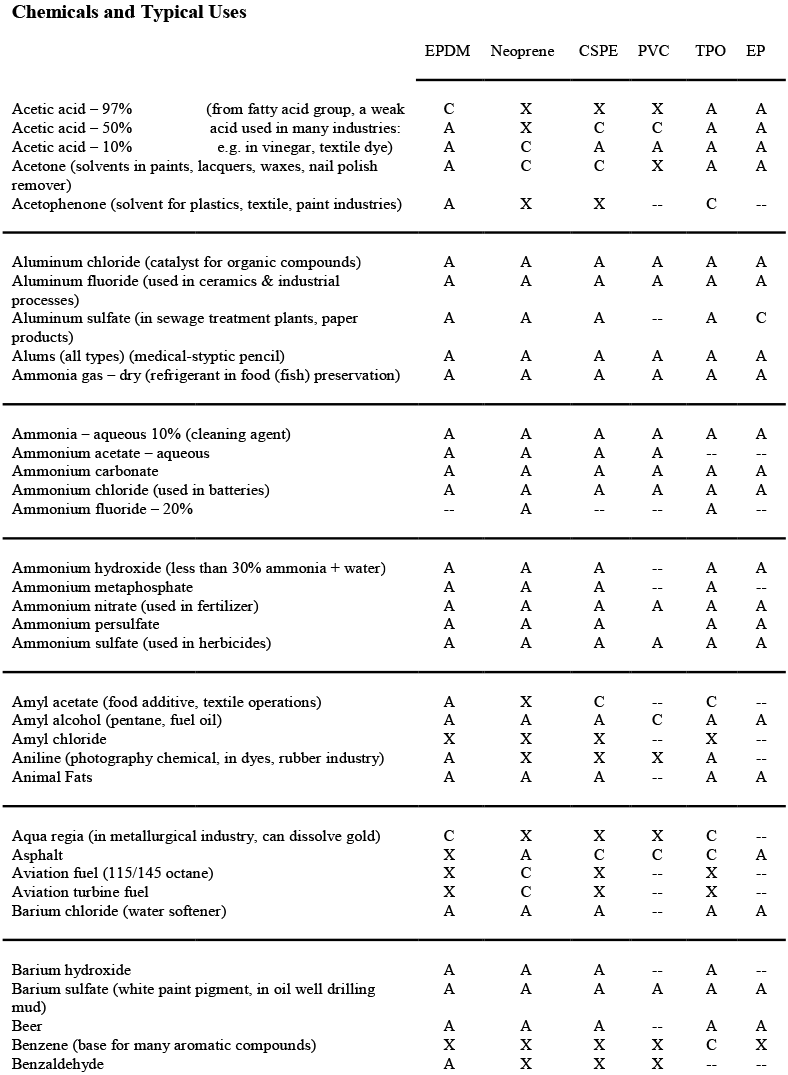
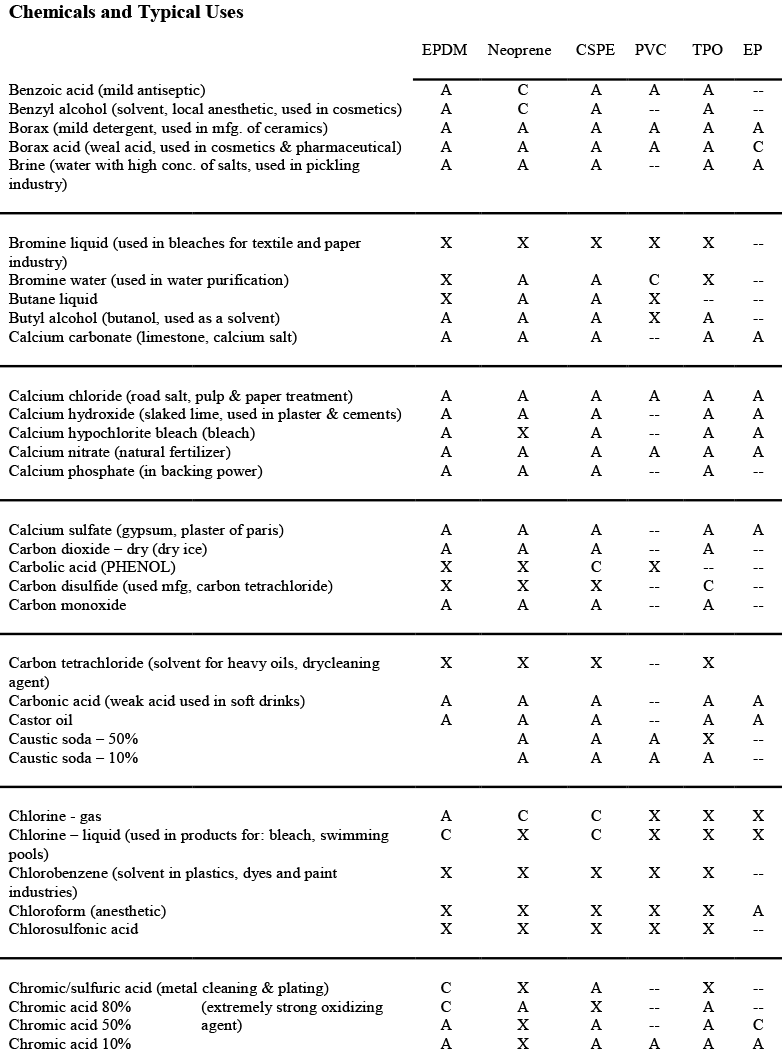

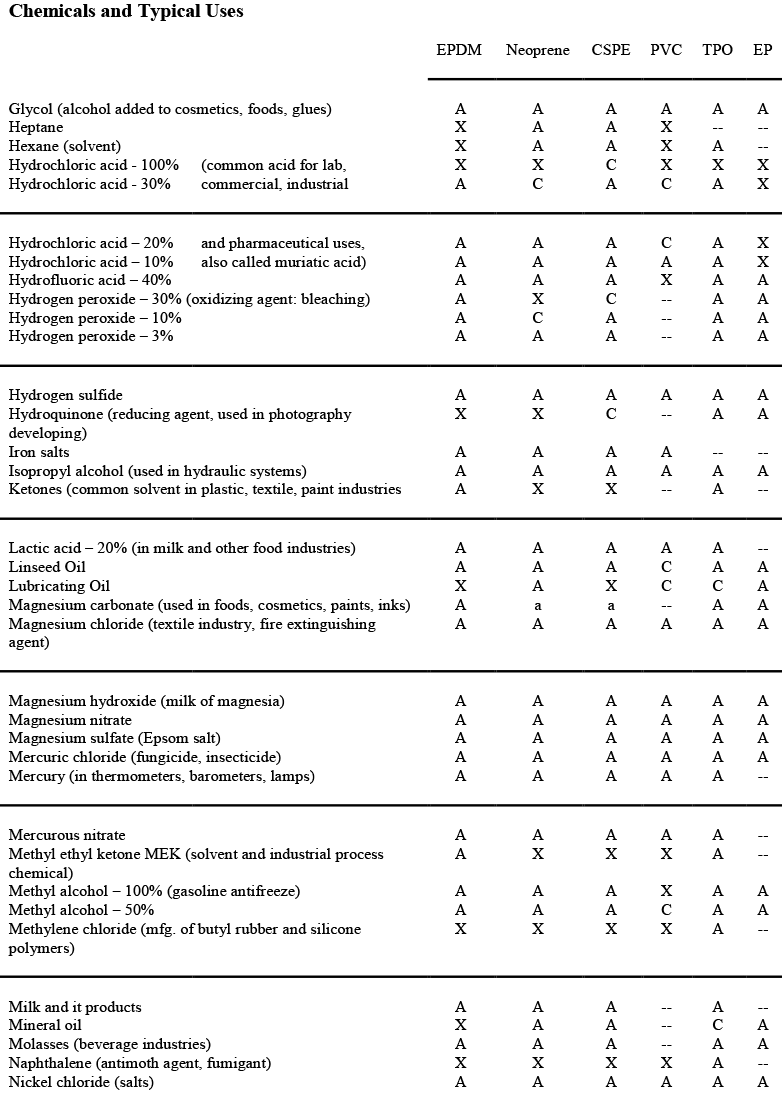
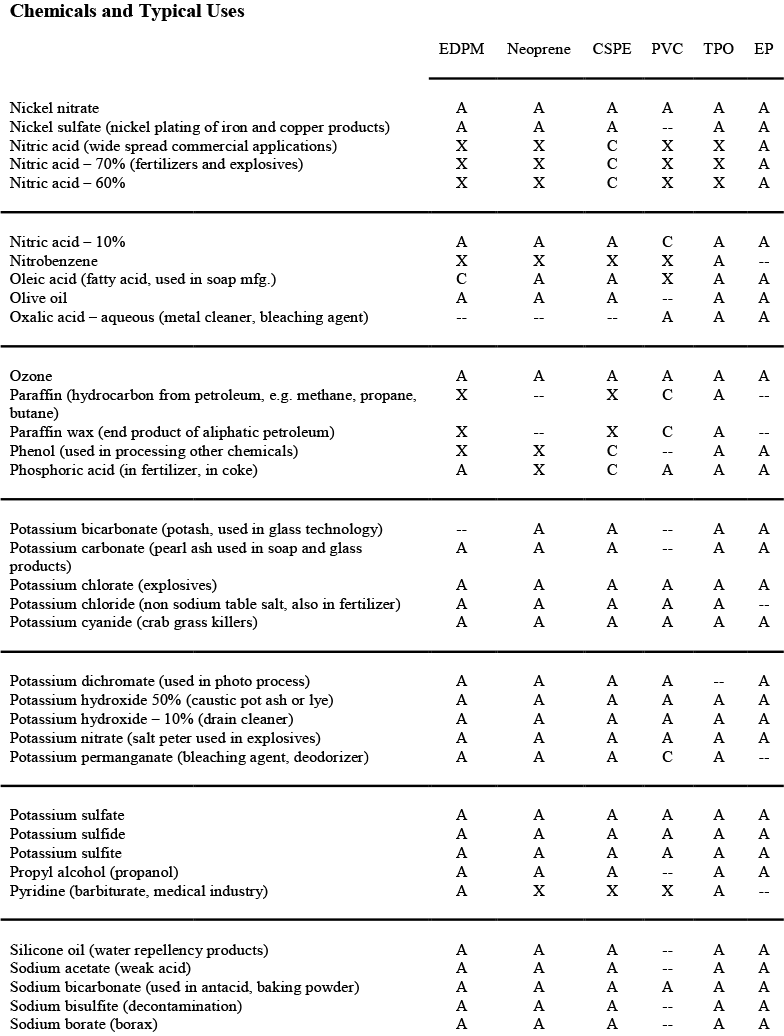
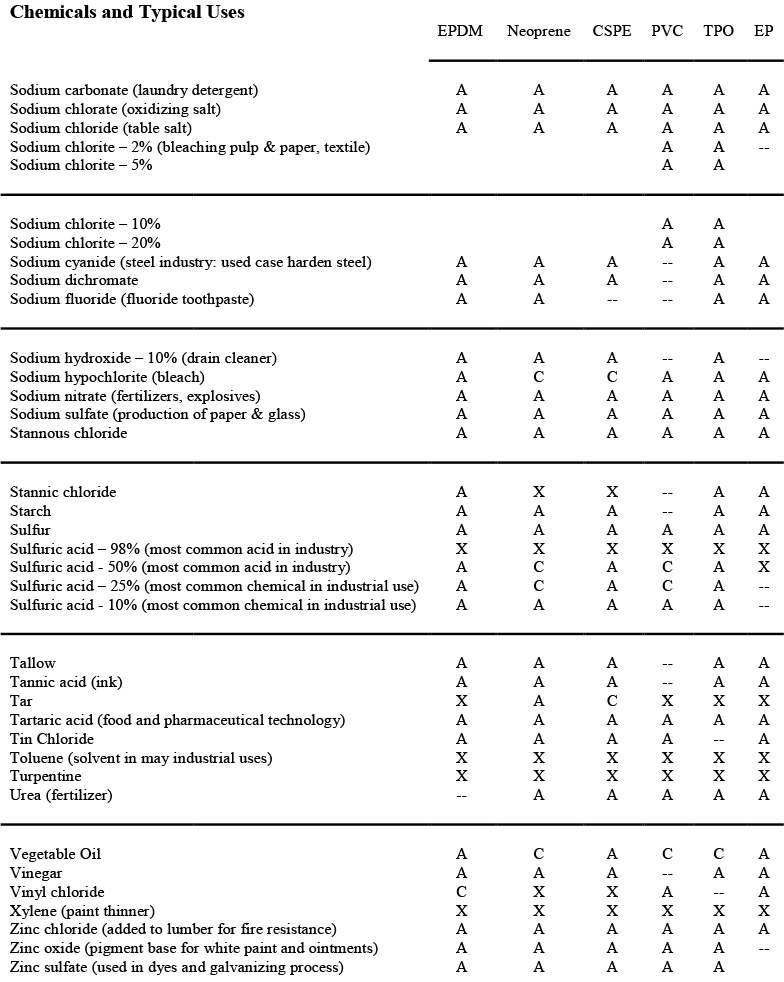
The opinions expressed herein are those of the CRCA National Technical Committee. This Technical Bulletin is circulated for the purpose of bringing roofing information to the attention of the reader. The data, commentary, opinions and conclusions, if any, are not intended to provide the reader with conclusive technical advice and the reader should not act only on the roofing information contained in this Technical Bulletin without seeking specific professional, engineering or architectural advice. Neither the CRCA nor any of its officers, directors, members or employees assume any responsibility for any of the roofing information contained herein or the consequences of any interpretation which the reader may take from such information.
